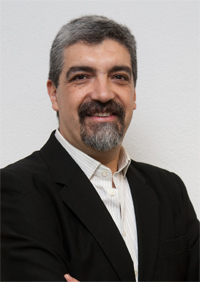Diego Maza Ozcoidi,, Professor of Physics at the University of Navarra.
The humming of the Universe

Contrary to other scientific ideas of the 20th century that have recently been validated, the existence of these waves is relatively easy to understand if we open our minds and put aside the impressions of intuition. Indeed, just as sound waves allow us to listen in on our surroundings - transporting energy and deforming over and over again the medium through which they propagate - gravitational waves carry their message through the universe by deforming a much more subtle, but just as real, fabric, which is empty space. And this space includes a dimension we are not used to thinking about: time.
This space-time exists so that mass can interact with each other. Since the time of Galileo and Newton, there has been interest in discovering its properties. Precisely with this measurement, it has finally been proven that the strongest interaction in the universe, gravity, also propagates at the speed of light, deforming the universe to carry its message. These messages have always been there, but they are so faint that to hear them we have required a monumental installation: interferometers - instruments that use the interference of light waves to measure with great precision wavelengths of the same light - with optical cavities 4 kilometers long that, being at civil service examination in phase, do not emit a signal if the space between them contains no message. However, if the space-time fabric is deformed by some "extraordinary event", propagation through each of the branches is affected, and a signal is detected.
In this case, the expression "extraordinary event" is not at all exaggerated, since the properties of spacetime are so particular that it took the dance of two black holes for gravitational waves to finally be observed.
Finally, also paradoxes of science, practically the same experimental device that one hundred years ago allowed Michelson and Morley to rule out the existence of the ether - giving rise to the development of the Theory of Relativity - has now allowed to confirm it.
